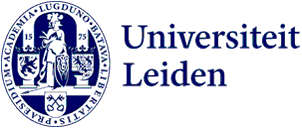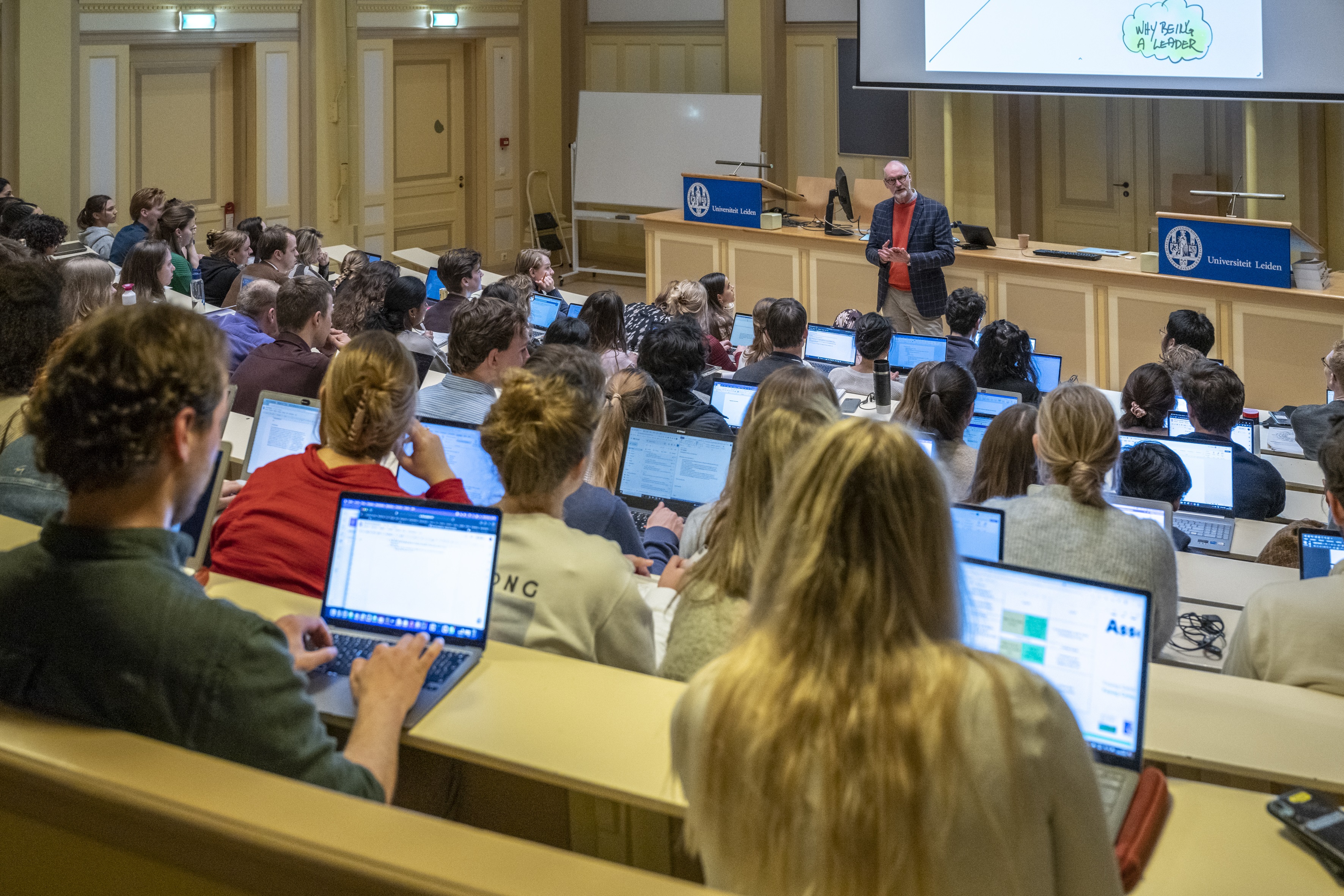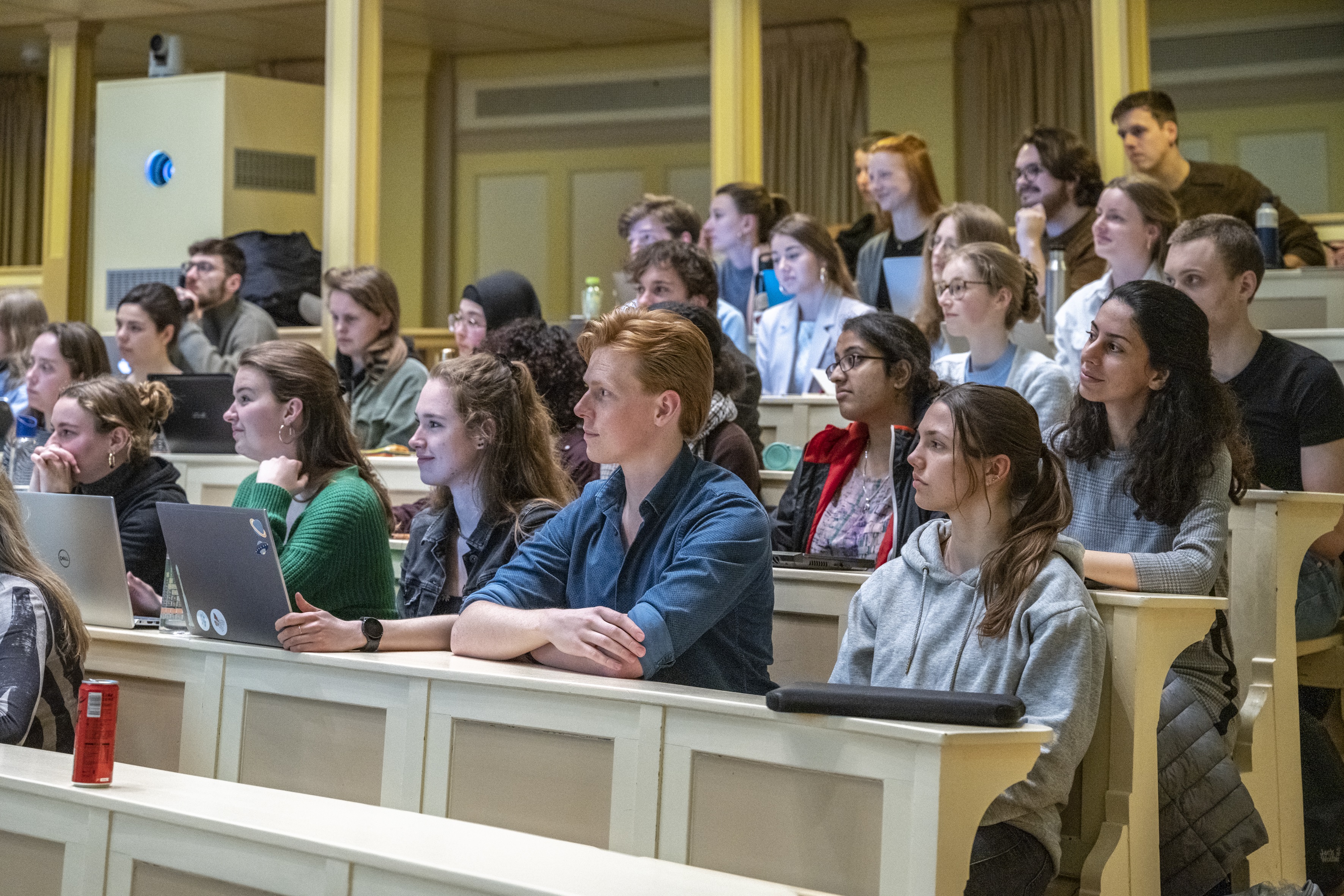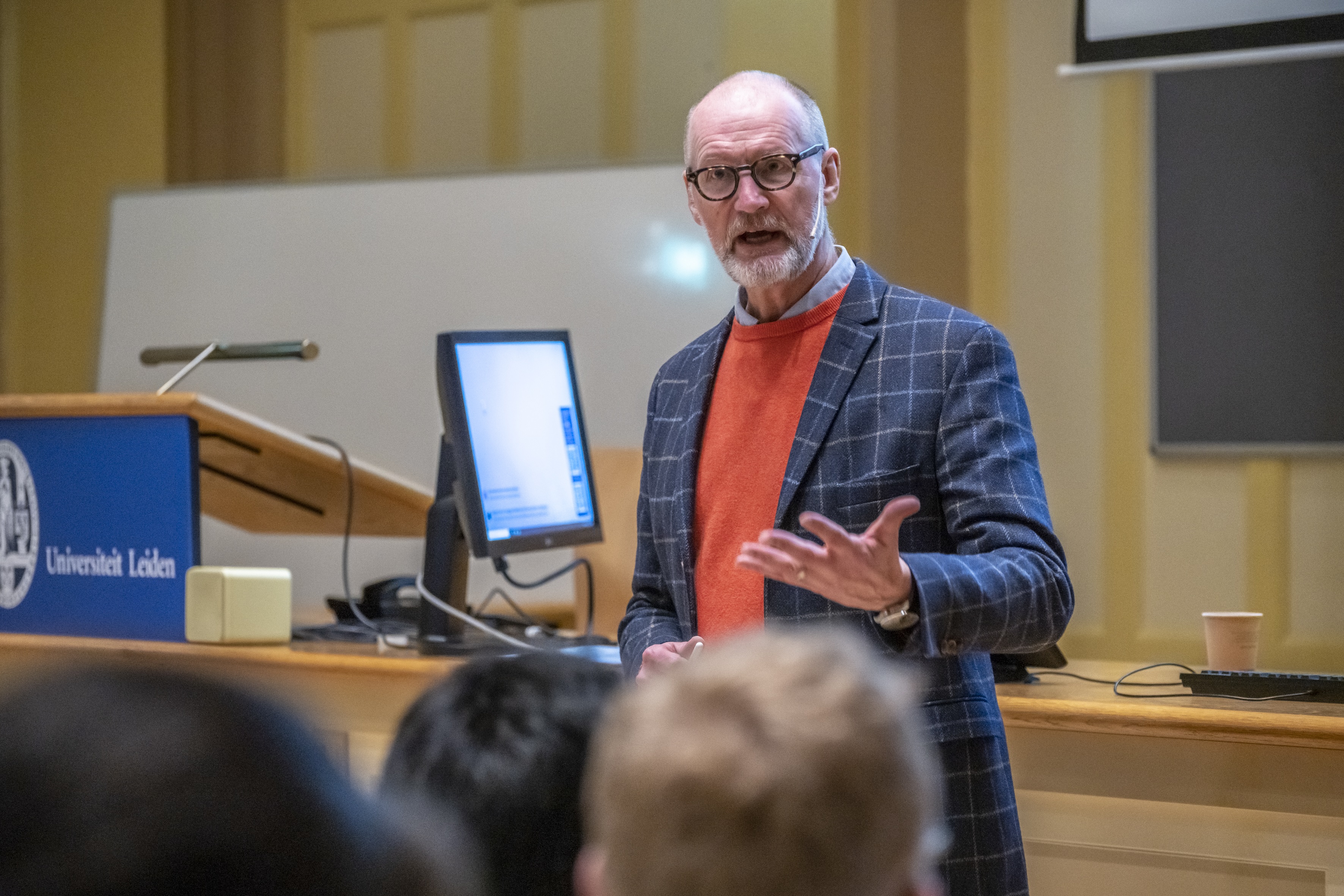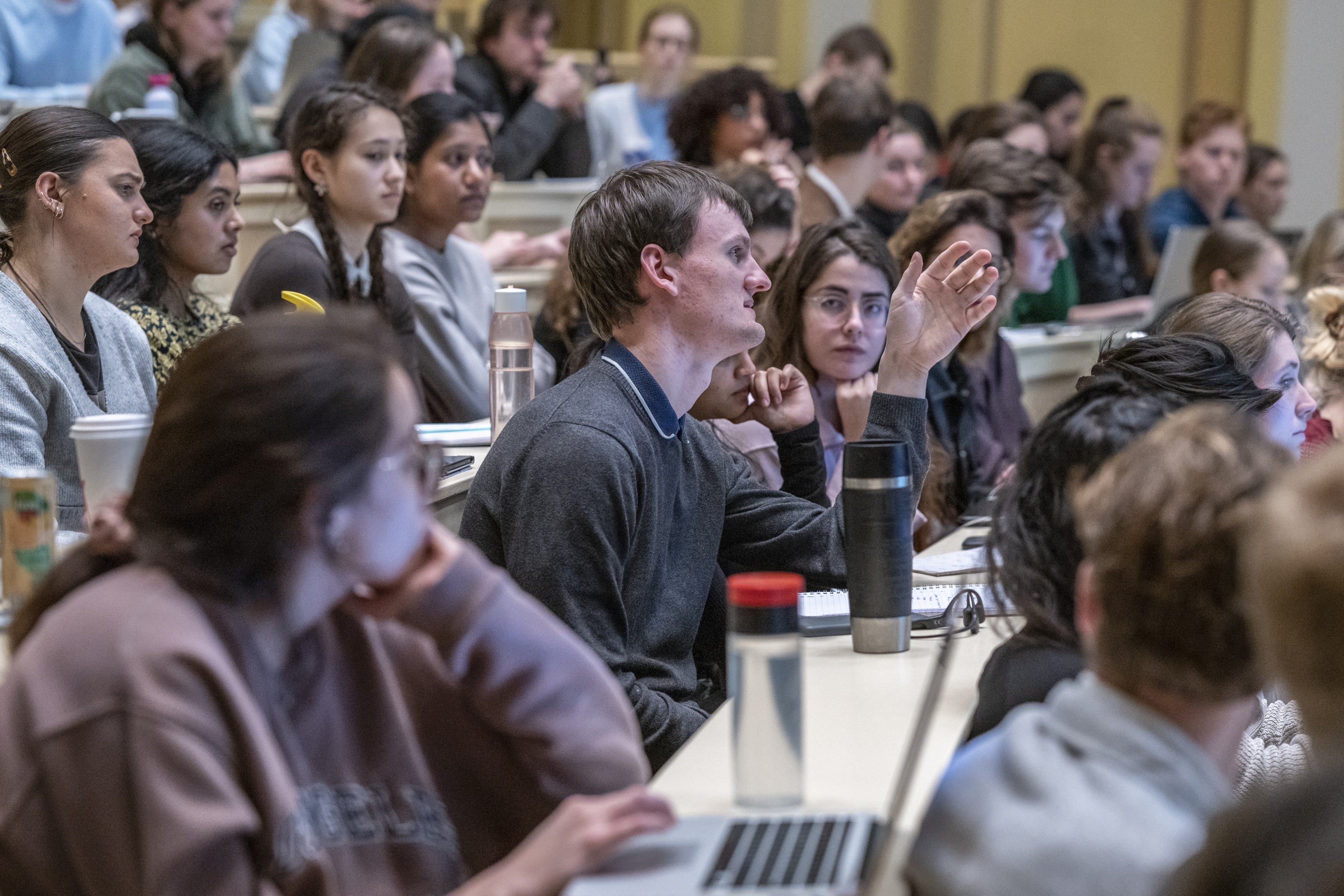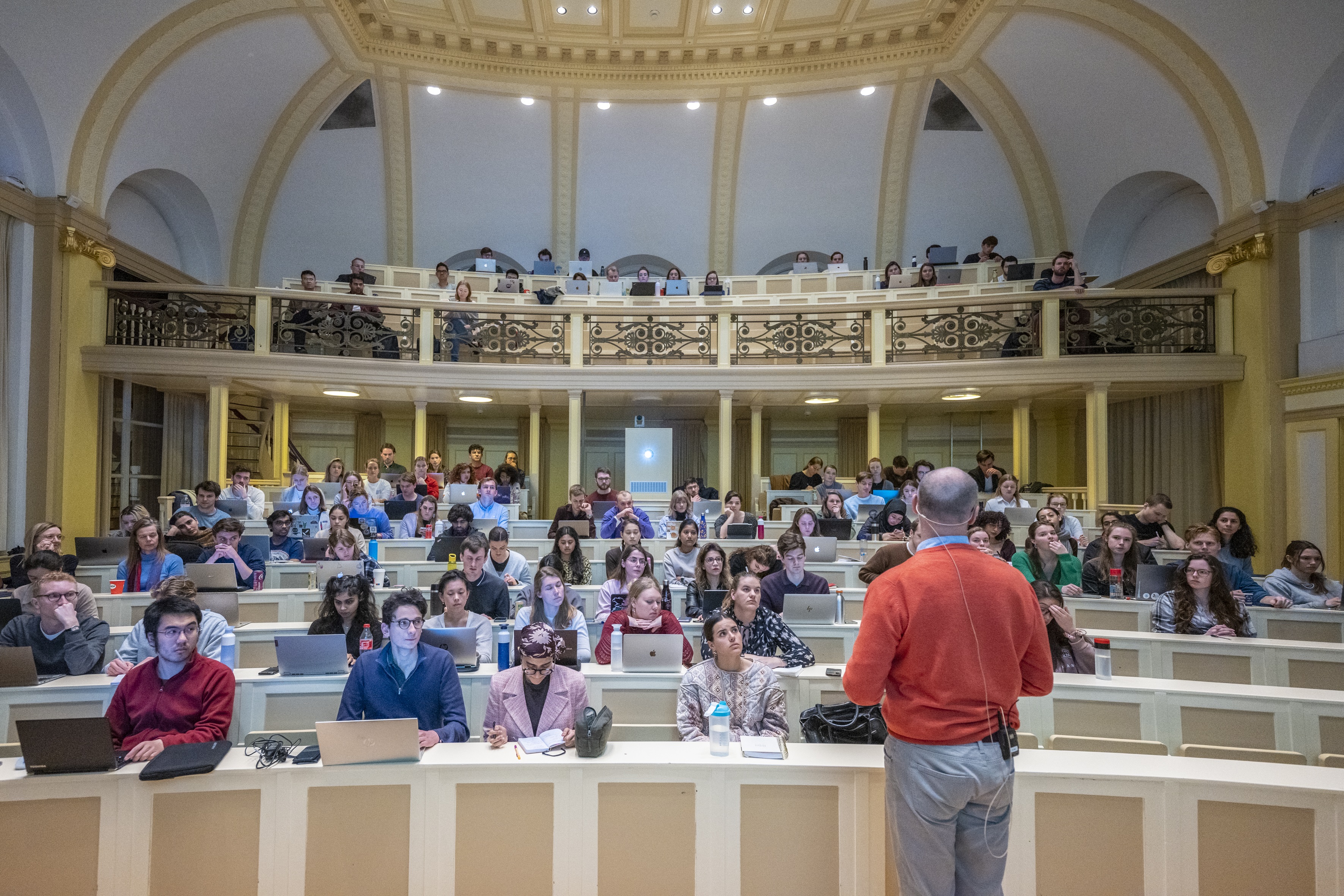
Volvo SVP shares lessons on leadership
In a guest lecture, Senior Vice President at Volvo Penta, Peter Hertinge, shared his lessons on leadership with master honours students of the Leiden Leadership Programme. 'If you set expectations, people will behave accordingly.'
Who is Peter Hertinge?
Peter Hertinge is a Senior Vice President of "Global Operations and Quality" at Volvo Penta. He has 35 years of experience in financial management, HR, sales and as general manager. From these positions, he has also been involved in leadership programmes in his organisations.
The Leiden Leadership Programme (LLP) lecture starts with the most important question. Why does someone want to be a leader? Often, people do not know what they want to achieve as a leader,' Peter explains. 'For power or for money? Or because you want to change something in your environment?' He then challenges the group to ask themselves why they are following this programme. 'Why do you want to become a leader?'
The audience has various answers to this question, ranging from developing skills to wanting to change the world. However, not all students have a clear reasoning yet. Peter says that at the beginning of his career, he did not have one either. 'I mainly wanted to prove myself,' he explains. Nevertheless, it proved necessary to think about what drives him. 'Only when you know that you can be a true leader.'
Setting an example
Although, good leadership does not only require one to know oneself. The context of the company in which you work is important as well. Your leadership style has to match the organisation's values, Peter believes. The values of employees, teams and the organisation as a whole must be aligned. 'As a leader, you have to reflect this. If you set expectations, people will behave accordingly. You must set an example.'
Peter believes that people want to contribute. This goes against the image that was prevalent for a long time. It was thought that employees were only interested in earning money. Leaders and managers were there to check whether their employees were working as hard as they should. But Peter thinks this presupposition is outdated. 'People would rather participate than stand on the side-lines. People want to improve themselves.' This view shapes Peter’s leadership style.
Why, what and how
A company must have a raison d'être, Peter explains – a vision. 'If a manager locks himself away for three months to formulate a vision, it probably won't work. You have to involve your employees in the process. Engage in discussions! And step by step, they too will make the vision their own.'
What should this vision entail? Above all, you have to make clear how tasks contribute to achieving objectives. 'The more time you spend with your team on this, the better the result will be.' On top of this, you need to look at the process: 'What structures do we use? How do we make decisions? A certain corporate culture has to be created.'

As a leader, you have to balance vision, tasks and process. In other words, the why, what and how. 'If you can combine these things, you learn systems thinking. You see how things interact with each other, even over time.' This allows you to view problems within the context of the organisation. This is essential according to Peter. 'Too often leaders go for the easy and quick solution, but this often backfires.'
Leadership starts with yourself
LLP student Chaya Berger (International and European Governance) was very impressed by Peter's story. 'It's always nice to have a person with an impressive career in front of you.' The guest lecture differed from the usual lectures she attends. ‘I felt more willing to ask questions,' she explains. 'Peter really valued our input. We could be a bit more free.'
Participating in the Leiden Leadership Programme is something Chaya would wholeheartedly recommend. 'It's a unique experience where you get to learn more about yourself. You find out that leaders are not just the higher-ups, but that leadership starts with yourself.'
Text: Robin Buijs
Photos: Buro JP
